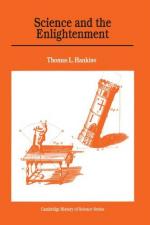
|
| Name: _________________________ | Period: ___________________ |
This quiz consists of 5 multiple choice and 5 short answer questions through Chapter 3, Experimental Physics.
Multiple Choice Questions
1. Leibniz, in his differential calculus, broke up the curve into many little straight lines, creating a ________, in Chapter 2 of "Science and the Enlightenment."
(a) Diagonal curve.
(b) Polygon curve.
(c) Pentagon curve.
(d) Centripetal curve.
2. Descartes's "quantity of motion" is equivalent to our modern principle of the conservation of ________.
(a) Hermeneutics.
(b) Formalism.
(c) Momentum.
(d) Impression.
3. Who had written a preface to the second edition of the "Principia," supposedly with Newton's blessing, that described gravity as a force acting at a distance without any intervening medium?
(a) Roger Cortes.
(b) Robert Boyle.
(c) James Butler.
(d) Henry Oldenburg.
4. The ________, who had been leaders in experimental physics during the seventeenth century, continued to hold a prominent place until their order was suppressed in 1773.
(a) Jewish.
(b) Christians.
(c) Buddist.
(d) Jesuits.
5. ________, "curator of experiments" at the Royal Society, began research on the luminosity of phosphorus in 1705, under instruction from members of the society.
(a) Abbe Nollet.
(b) Francis Hauksbee.
(c) John Cuthbertson.
(d) William Gilbert.
Short Answer Questions
1. What was the name of the path by which an object slides from one point to another that is not on the same vertical line in the shortest possible time?
2. Who claimed a community of atheists could live a completely moral existence, according to Chapter 1 of the book "Science and the Enlightenment"?
3. Who coined the expression "Scientific Revolution," according to the narrator in Chapter 1?
4. According to Chapter 2, for Newton, ________ consisted in "making experiments and observations and in drawing general Conclusion from them by Induction."
5. Newton had not made it clear whether the forces acting between the planets and between the parts of matter acted at a distance or through some intervening medium called a(n) ________.
|
This section contains 283 words (approx. 1 page at 300 words per page) |

|




